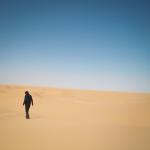
bunk
-
Posts
234 -
Joined
-
Last visited
Reputation Activity
-
 bunk got a reaction from Liam in de-logging
bunk got a reaction from Liam in de-logging
Yesterday I discovered something I kind of knew in the back of my head but never checked out.
I was doing a grade on the neutral grade I did earlier on the S-log3 footage Andrew was so kind to share with us. All looked fine, but the part of the couple near the
pedestrian crossing.
.The colours in the girls face felt apart. I reset the effect I was applying …and this time I only used the master curve, to get the two skin tones -which were falling apart- to match as close as possible. When I finished I had basically drawn a squeezed S-log3 curve.
Next I Googled for the biggest pictures I could find for S-log and V-log. I opened them in Photoshop and traced the curves. In a separate layer I created a square divided in 8 rows and columns, just like the background of my master curve looks like. Next selected the ‘traced curve’ and with the transformation tool forced the x-dimension inside the square. Flattened the image, imported it in my NLE and with three points recreated the curve in the master curve window. Bingo! Saved the the curve to an .acv format for later use.
….And that is al there is to de-logging a 1D-LUT or spline. It’s easy to create, something you can do yourself.
So how does that work in practice. I can tell how I do it and think something alike should be possible in all NLE’s
I work in AE and use Color Finesse. I think it was at some point in time distributed for free with AE in the states. Not so in Europe, I had to pay the full price …but I really like the plugin and have no regrets.
The plugin is added as an effect to the footage. Under curves the ‘Log curve’ is loaded. Under Levels the input levels are adjusted (leave the grayscale handle as is, that’s why you created the LogCurve) and output if necessary. The changes are applied.
Brightness and contrast are now adjusted, no color adjustment is done. Basicly what the C300 gives as a preview option for it’s log.
Next an Adjustment layer is added to the timeline. ColorFinesse is applied to the Adjustment Layer and under HSL Saturation under Shadow and Midtones is set from 100 to 133,33, Highlights left for what it is. My guess is that when 33,33 % saturation is added to each channel, you would get full Saturation. But that is just a guess.
You now have a ‘basic color corrected de-logged file’. To grade further let you imaginations go wild…
In the linked mov with Andrews footage I adjusted the curves like so. By banding the red curve downward you add a slight red cast to the footage as the curve to the top is no longer straight. Doing the opposite with green curve amplifies it. Blue curve is kept as straight as possible while adding blue to the shadows. HSL curves speak for themselves. Alas the girls skin still falls apart, so there must be something wrong with the footage
With above methode I’m less plagued by the YCbCr macro blocking on GH4 footage as with my other custom methode. Will have to do some more testing.
I thought I share my findings as maybe it’s of some use to others as it makes Log grading kind of simple.
-
 bunk got a reaction from Pavel Mašek in NX1 and serious macroblocking - faulty unit?
bunk got a reaction from Pavel Mašek in NX1 and serious macroblocking - faulty unit?
Probably a complete stupid question ...but do you get the same macroblocking artifacts without the polarizer?
-
 bunk got a reaction from austinchimp in Shining a light - Sony A7S II first impressions & 4K S-LOG 3 clips for download / grading
bunk got a reaction from austinchimp in Shining a light - Sony A7S II first impressions & 4K S-LOG 3 clips for download / grading
Simple grade done, on the couple near the traffic light in AE with the ColorFinesse plugin. Same grade applied to the other parts.
-
 bunk got a reaction from CTRT in V-Log L captured in 8 bit vs 10 bit
bunk got a reaction from CTRT in V-Log L captured in 8 bit vs 10 bit
So far I have heard no mentioning of WB in combination with V-log …it has a huge influence and I actually suspect there is a bug related to WB an V-log causing the macro blocking artifacts.
I did some tests with the following settings: WB 4000K and 4200K, Natural vs V-log, Shutterspeed 30, ND 1.2, Exposure 6400, everything in All-I 25fps 1080. Shots where 2 stops underexposed. I used V-log to custom (own brew) on the Vlog clips.
As you hopefully can see in the picture, the noise pattern of the Natural clips is identical in both 4000K and 4200K. The only difference is the color.
The noise patterns (macro-blocking) of the V-log clips are completely different for each Kelvin value. Only when you reach the top values (±9000 and up) the patterns become more identical.
It is as if the WB adds ad-random posterization to V-Log clips as if the white balance is part of "V-log space". I do not know enough about WB and how it works or should work but to me this looks and feel like a bug.
If it's not a bug …I would like to know how to set the WB because even Custom has a a different noise distribution each and every time you set one. The second picture shows this. Each of the four custom settings give different noise patterns, even though the conditions were the same at the time of creation. The two at the bottom look quite similar but that is luck. To be clear these are not four frames out of the same clip. The macro block islands change shape but stay where the are …and their position and number are completely random as far as I can tell.
Hope someone can either confirm it's a bug or tell me how to use WB properly.
Thanks.
-
 bunk got a reaction from TheRenaissanceMan in V-Log L captured in 8 bit vs 10 bit
bunk got a reaction from TheRenaissanceMan in V-Log L captured in 8 bit vs 10 bit
So far I have heard no mentioning of WB in combination with V-log …it has a huge influence and I actually suspect there is a bug related to WB an V-log causing the macro blocking artifacts.
I did some tests with the following settings: WB 4000K and 4200K, Natural vs V-log, Shutterspeed 30, ND 1.2, Exposure 6400, everything in All-I 25fps 1080. Shots where 2 stops underexposed. I used V-log to custom (own brew) on the Vlog clips.
As you hopefully can see in the picture, the noise pattern of the Natural clips is identical in both 4000K and 4200K. The only difference is the color.
The noise patterns (macro-blocking) of the V-log clips are completely different for each Kelvin value. Only when you reach the top values (±9000 and up) the patterns become more identical.
It is as if the WB adds ad-random posterization to V-Log clips as if the white balance is part of "V-log space". I do not know enough about WB and how it works or should work but to me this looks and feel like a bug.
If it's not a bug …I would like to know how to set the WB because even Custom has a a different noise distribution each and every time you set one. The second picture shows this. Each of the four custom settings give different noise patterns, even though the conditions were the same at the time of creation. The two at the bottom look quite similar but that is luck. To be clear these are not four frames out of the same clip. The macro block islands change shape but stay where the are …and their position and number are completely random as far as I can tell.
Hope someone can either confirm it's a bug or tell me how to use WB properly.
Thanks.
-
 bunk got a reaction from Zak Forsman in V-Log L captured in 8 bit vs 10 bit
bunk got a reaction from Zak Forsman in V-Log L captured in 8 bit vs 10 bit
So far I have heard no mentioning of WB in combination with V-log …it has a huge influence and I actually suspect there is a bug related to WB an V-log causing the macro blocking artifacts.
I did some tests with the following settings: WB 4000K and 4200K, Natural vs V-log, Shutterspeed 30, ND 1.2, Exposure 6400, everything in All-I 25fps 1080. Shots where 2 stops underexposed. I used V-log to custom (own brew) on the Vlog clips.
As you hopefully can see in the picture, the noise pattern of the Natural clips is identical in both 4000K and 4200K. The only difference is the color.
The noise patterns (macro-blocking) of the V-log clips are completely different for each Kelvin value. Only when you reach the top values (±9000 and up) the patterns become more identical.
It is as if the WB adds ad-random posterization to V-Log clips as if the white balance is part of "V-log space". I do not know enough about WB and how it works or should work but to me this looks and feel like a bug.
If it's not a bug …I would like to know how to set the WB because even Custom has a a different noise distribution each and every time you set one. The second picture shows this. Each of the four custom settings give different noise patterns, even though the conditions were the same at the time of creation. The two at the bottom look quite similar but that is luck. To be clear these are not four frames out of the same clip. The macro block islands change shape but stay where the are …and their position and number are completely random as far as I can tell.
Hope someone can either confirm it's a bug or tell me how to use WB properly.
Thanks.
-
 bunk got a reaction from CTRT in V-Log L captured in 8 bit vs 10 bit
bunk got a reaction from CTRT in V-Log L captured in 8 bit vs 10 bit
You can upgrade to 2.4 without worries
-
 bunk got a reaction from jonpais in Driftwood V-Log L Samples - V709 & Arri Alexa LUT Comparisons
bunk got a reaction from jonpais in Driftwood V-Log L Samples - V709 & Arri Alexa LUT Comparisons
Why not make your own grade, not based on a exciting LUT.
It has a couple of advantages the first being it’s your own grade, the second being that if you adjust it you adjust the grade and not add an adjustment after the LUT (deteriorating your footage even further) and third you learn a little more about grading or at least your grading software.
I tried to recreate the ArriRec709Lut image I found on Driftwoods twitter page of the woman in the close up. Took a day or so …and later I found more efficient ways to do the same thing and eventually made my own version. Applied that same setting to the other footage as well and it seems to hold up just fine.
-
 bunk got a reaction from jcs in Driftwood V-Log L Samples - V709 & Arri Alexa LUT Comparisons
bunk got a reaction from jcs in Driftwood V-Log L Samples - V709 & Arri Alexa LUT Comparisons
Why not make your own grade, not based on a exciting LUT.
It has a couple of advantages the first being it’s your own grade, the second being that if you adjust it you adjust the grade and not add an adjustment after the LUT (deteriorating your footage even further) and third you learn a little more about grading or at least your grading software.
I tried to recreate the ArriRec709Lut image I found on Driftwoods twitter page of the woman in the close up. Took a day or so …and later I found more efficient ways to do the same thing and eventually made my own version. Applied that same setting to the other footage as well and it seems to hold up just fine.
-
 bunk got a reaction from Cinegain in Driftwood V-Log L Samples - V709 & Arri Alexa LUT Comparisons
bunk got a reaction from Cinegain in Driftwood V-Log L Samples - V709 & Arri Alexa LUT Comparisons
Why not make your own grade, not based on a exciting LUT.
It has a couple of advantages the first being it’s your own grade, the second being that if you adjust it you adjust the grade and not add an adjustment after the LUT (deteriorating your footage even further) and third you learn a little more about grading or at least your grading software.
I tried to recreate the ArriRec709Lut image I found on Driftwoods twitter page of the woman in the close up. Took a day or so …and later I found more efficient ways to do the same thing and eventually made my own version. Applied that same setting to the other footage as well and it seems to hold up just fine.
-
 bunk got a reaction from andy lee in Panasonic G7 and Metabones Speed Booster XL hands-on - Super 35mm 4K for cheaper
bunk got a reaction from andy lee in Panasonic G7 and Metabones Speed Booster XL hands-on - Super 35mm 4K for cheaper
It effects close range as well, way more for that matter.
Here is an example
I have a lens turbo EF to m43. I use vintage lenses, mostly Contax Yashica (thanks Andy) To fit them to the lens turbo they need an adapter ring. I adjusted the Lens turbo so the Yashica lenses hit infinity without overshoot.
Then I found a Yashica Auto Yashinon zoom1:3.5 45-115mm. It’s a M42 mount. It connects with an adapter ring to the EF lens turbo.
Focus between 115 and 45 were completely off. So I checked if I could improve that by adjusting the lens turbo element. It’s not a real parfocal lens (I think), but it is now as close to parfocal as I can get it.
If I now connect my C/Y they slightly overshoot when set to infinity …I couldn’t care less as the zoom lens suddenly is way easier to handle as everything stays in “focus” throughout the zoom range.
Non of these lenses have an original EF mount, all adapterrings differ so to make it stick to one lensturbo/speedbooster you will have to make choices.
Metabones advice is for varivocal lenses. From my understanding the Sigma 18-35 is a parfocal lens. And I think it’s your lens to go, so if I were you, I would make sure it behaves parfocal on the adapter …even if that means other lenses will suffer from it.
-
 bunk got a reaction from Junior in Panasonic G7 and Metabones Speed Booster XL hands-on - Super 35mm 4K for cheaper
bunk got a reaction from Junior in Panasonic G7 and Metabones Speed Booster XL hands-on - Super 35mm 4K for cheaper
It effects close range as well, way more for that matter.
Here is an example
I have a lens turbo EF to m43. I use vintage lenses, mostly Contax Yashica (thanks Andy) To fit them to the lens turbo they need an adapter ring. I adjusted the Lens turbo so the Yashica lenses hit infinity without overshoot.
Then I found a Yashica Auto Yashinon zoom1:3.5 45-115mm. It’s a M42 mount. It connects with an adapter ring to the EF lens turbo.
Focus between 115 and 45 were completely off. So I checked if I could improve that by adjusting the lens turbo element. It’s not a real parfocal lens (I think), but it is now as close to parfocal as I can get it.
If I now connect my C/Y they slightly overshoot when set to infinity …I couldn’t care less as the zoom lens suddenly is way easier to handle as everything stays in “focus” throughout the zoom range.
Non of these lenses have an original EF mount, all adapterrings differ so to make it stick to one lensturbo/speedbooster you will have to make choices.
Metabones advice is for varivocal lenses. From my understanding the Sigma 18-35 is a parfocal lens. And I think it’s your lens to go, so if I were you, I would make sure it behaves parfocal on the adapter …even if that means other lenses will suffer from it.
-
 bunk got a reaction from jonpais in Panasonic GH4 firmware update brings 24p Anamorphic, V-LOG coming in later update / watch footage
bunk got a reaction from jonpais in Panasonic GH4 firmware update brings 24p Anamorphic, V-LOG coming in later update / watch footage
I gave it a go. For some reason I couldn't import it in Premiere nor AE (too high bitrate?). Opened it in MpegStreamclip and exported it to quicktime AppleProres 422HQ.
Then Graded the clip with SyntheticAperture in Premiere.
-
 bunk got a reaction from TSV in Help : Use Clone Stamp in CC with Video
bunk got a reaction from TSV in Help : Use Clone Stamp in CC with Video
-In Photoshop open your movieclip. Menu> Command O…
The animated version.
-Drag the movie clip on the 'New layer' Icon in the Layer palette. This will duplicate the layer. It's an animated layer.
-Create a Selection for the part of the sky you want to put on top of the lady bug
-With the duplicate layer and the selection active click the 'Layer Mask' icon on the Layer Palette. The 'Layer Mask' is now active on the duplicate layer
-Drag the duplicate layer in place.
-Shorten the timeline for the duplicated clip to your needs.
The still version.
-Select the part of your footage you want to clone.
-Command C/V. This will paste the selection as a duplicate on top of the original in a new layer. It's not an animated layer.
-Set a sample with the clone tool somewhere in the duplicate layer.
-Make the movie clip layer active and start cloning.
I don't now how FCP works exactly but you should put a masked clip on top of the other (still or animated) and be done with it.
-
 bunk got a reaction from Daniel Acuña in Lenses
bunk got a reaction from Daniel Acuña in Lenses
Not the first thing I would adjust if it's a used lens you bought. If you adjust the adapter to this lens it could be off to any other lens you attach. If you have several lenses, first check the others to see if they can focus properly. If that is the case adjust Contax Zeiss instead. Chance is that it was cleaned before shipping and put back together without checking infinity. If the lens looks similar to a Contax Yashica (judging from some potos on the net it does) it should be fairly easy to do so. Here is a link with photos http://forum.mflenses.com/infinity-tune-for-contax-lens-t7011.html
The three screws let you turn the focus with the lens. If you loosen the screws some you can turn the ring without moving the lens. Rotate the ring 1or 2 degrees fasten the screws and see if infinity is in reach. Don't overdo it or you will loose minimum focus distance.








